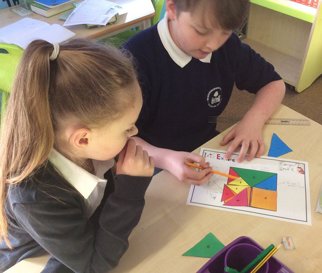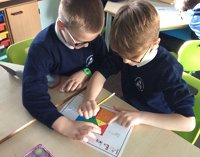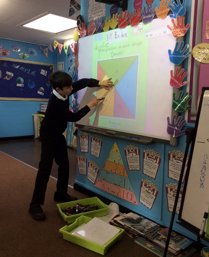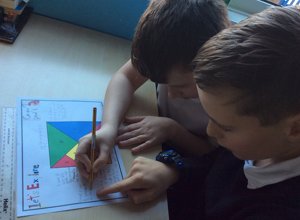I recently worked with staff at Washingborough Academy and had a great day helping to develop their (already very good) maths teaching. The main focus was on making their lesson structure more effective to give teachers the opportunity to spend longer on a topic as needed and so give the children a better chance of mastering concepts and skills.
Here are a few things we discussed on short-term planning and my ideas on how to make it work with a ‘mastery’ approach. It is important to think of it as a fluid lesson sequence that runs over 2 or 3 days perhaps, rather than a series of individual lessons. It means that there is flexibility in the time you wish to spend on different elements of a lesson sequence which is a much better idea than rushing through parts of it or running out of time.
Always start by checking against the expected outcomes and map out the progression steps and teaching points which will give the focus for each teaching sequence.
You can then decide on the key models, images and vocabulary to help children in their understanding.
A suggestion for a teaching sequence is to include the following elements, structured in this order. It encourages an approach of teaching for mastery (or teaching for understanding), with opportunities for reasoning, problem solving, focussed teaching, ‘intelligent’ practice and assessment for learning, which underpins the approach.
Teachers at Washingborough Academy are trying a new lesson sequence structure and judging by their tweets the 'Let's Explore' part of the lesson is proving a success!
1. Explore
Practical exploration, a problem, challenge or a puzzle – something to engage and give a ‘hook’ to the lesson. It could be related to a context you have chosen and will often involve reasoning, looking for patterns and rules or trying to solve a problem as a class or in groups. Explore the problem with groups, prompting with questions.
3. Practice
Consolidation of the ‘Clarify’ session – short set of questions or practical activity to give time to embed learning. ‘Intelligent’ practice if possible, procedural variation and conceptual variation, using what they know about maths structures and patterns to help their learning.
Flexibility and small steps are important. You may, for example, wish to spend 20 minutes on an ‘explore’ activity then spend some time clarifying a concept and giving a practice activity before going back to clarify it further. This could then be followed up with more practice and then an extend activity before reviewing progress and understanding. All that may be over 3 or more days, dependent on the time you wish to spend on the topic to ensure depth of understanding.











